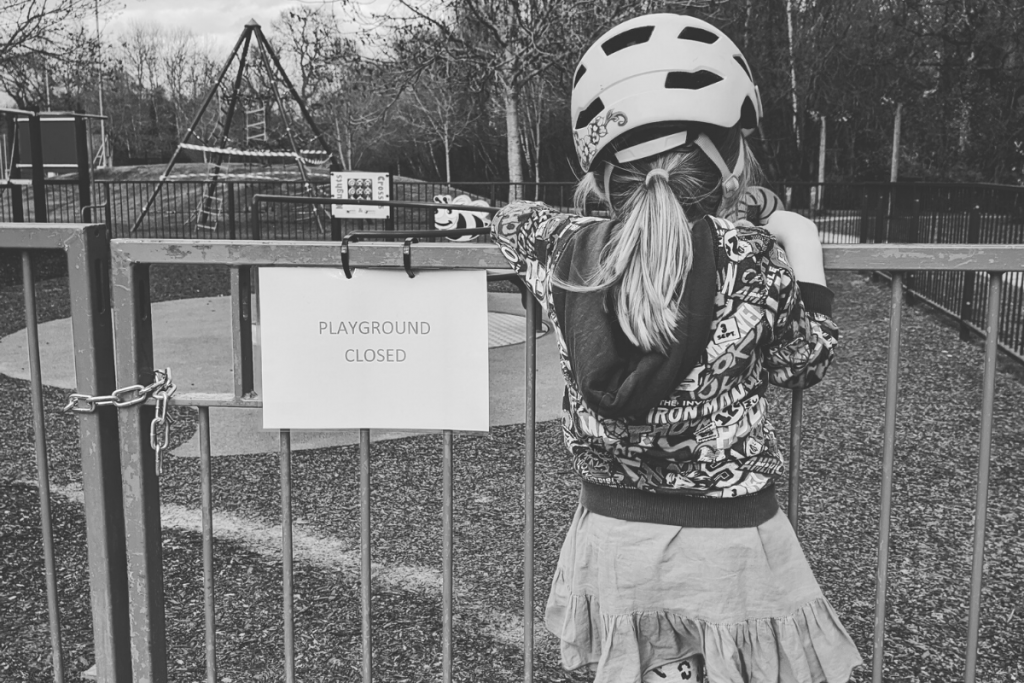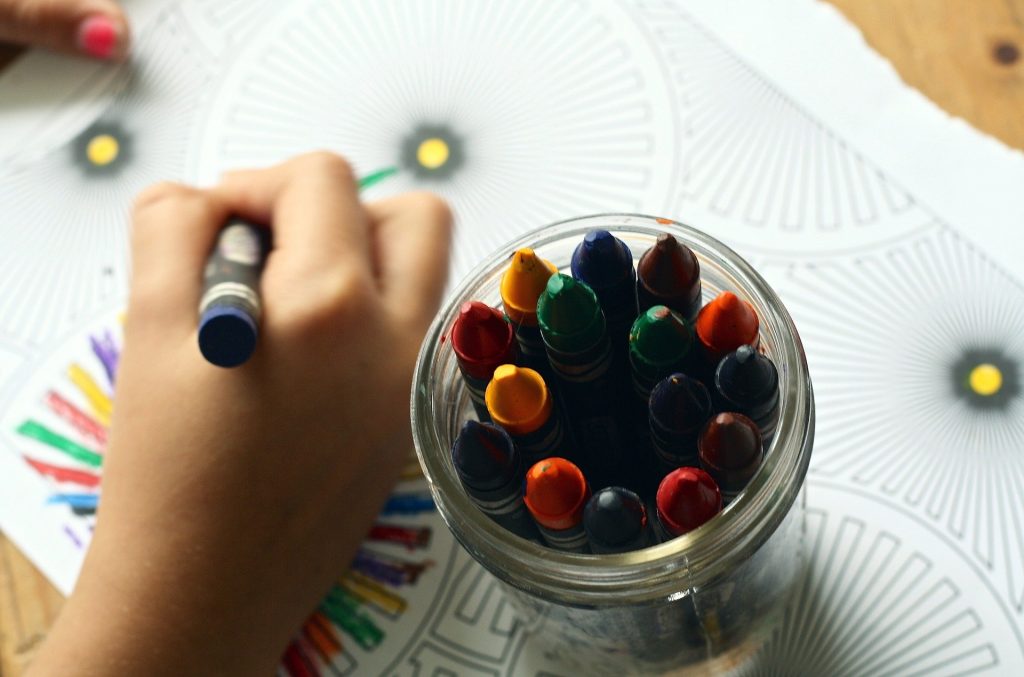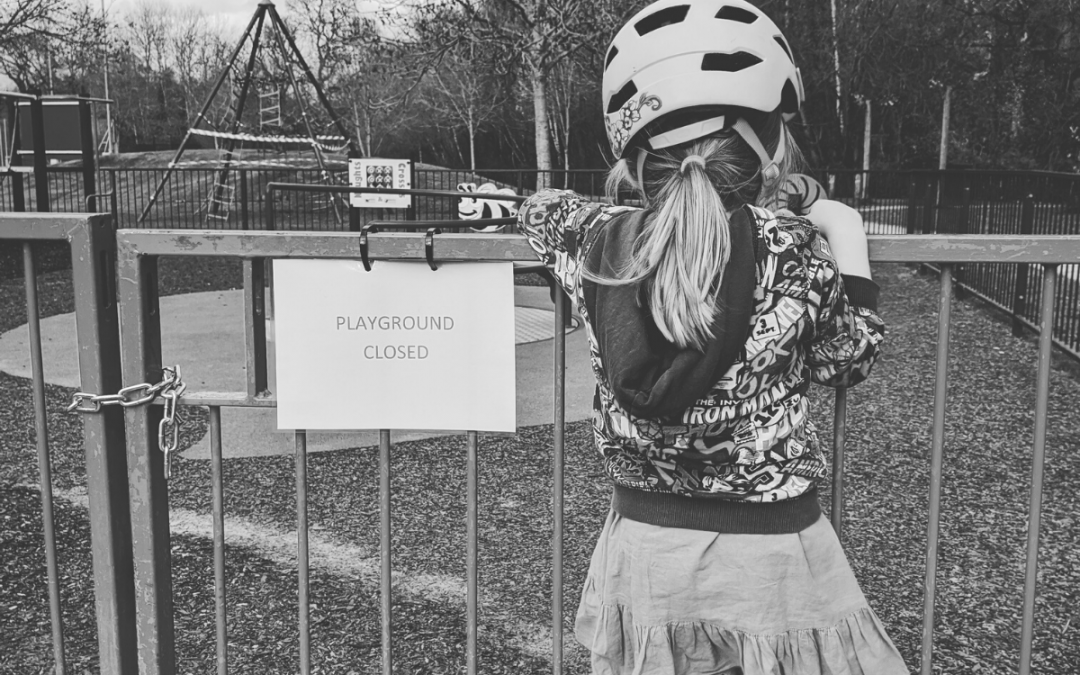Life as we know it has changed. In a matter of weeks activities such as going to work, school and the shops is no more. Coronavirus (Covid-19) has led to a need for everyday behaviours to be changed and it is likely that there has been an impact on your children emotionally; it is inevitable. You may be wondering how you can help your child manage with social isolation and the impact of the Coronavirus outbreak.
Knowing what to do to support your child can be complex and its very probable that you’ve no similar experiences to draw upon for guidance. Simply allowing your child to feel what they are feeling, allowing your child to express themselves in a safe way, spending time with them and allowing them to know you will try to help them express their emotions is enough.
How is it you can do this? Here we think about some of the practical ways you can support your child and some things to keep in mind when it feels like things are spiraling and your child seems to be struggling with social isolation and the Coronavirus pandemic.
What is the ‘right’ thing to do? Can I get it ‘wrong’?
The novel nature of this situation makes knowing if you are doing the ‘right’ thing more difficult. Firstly, and most importantly, there is little you can do ‘wrong’ in this situation. It is a new situation for everyone. Everyone in the entire world. It is okay for you to be finding it tough too. It is okay if you do not always do or say the right thing and as we navigate this new way of living, things will start to feel easier. Importantly, remember you don’t need to know all the answers, but being your child’s ‘safe place’ is an important, but tiring, role to fill.

Should I tell my children about what is happening?
Children hear more than we sometimes think they do, and process more than we sometimes give them credit for. Changes in behaviour prior to the ‘lockdown’, although subtle will have been noticed. Conversations will have been overheard. Now nearly all of us are home all of the time, conversations, the news, social media will all be overheard even more, and snippets of information will be taken in by our children. It is important to remember our children know what is happening is a big deal.
What you explain to them depends on their age and their level of understanding. Babies and toddlers will notice changes in behaviours. They will notice that they have not been out to their usual baby groups, the stay and plays you usually go to and they will have noticed a change in routine. Younger babies and toddlers will adapt to this situation perhaps with some behavioural upset but on the most part will ‘go with the flow’. There is little explanation you can give them but they are the age group most likely to adapt to a new routine the easiest.
As children reach the age of around 3, they start to wonder ‘why?’, they are gaining the concept of time, of friends and activities. You may start to see changes in behaviours more so in children of this age and older. They may ask more questions, they may become more defiant, more withdrawn or appear to be ‘hyperactive’. As they get older children may start to verbalise their worries and anxieties. They may express concern for others, or that they feel the situation is ‘unfair’, they may appear to have an ‘attitude’, start shouting more or spend more time with their screens or in their bedrooms. All behaviour changes are likely to be their response to this strange situation in which we find ourselves.
What should I tell them? How do I explain it?
It is important to give age appropriate explanations to children. For younger children simply telling them that lots of people are feeling poorly and to keep everyone safe everyone needs to stay at home is likely to be enough. It is likely that they will need this repeated often initially to remind them. (I often use the word ‘safe’ to explain why things need to happen. For example: ‘we can’t throw toys as we need to keep them safe’ or ‘I will sit with you to help keep your feelings safe’).
As children reach around the age of 5 or 6, greater explanations may be needed. These children are more likely to have picked up on the ‘Coronavirus’ word and may also be aware of people dying and start to have an understanding of what this means. It is important not to ignore this. With children of this age social stories can be an effective communication tool. Social stories breakdown events and situations into small segments and offer a pictorial explanation of a situation. Sit down with your child and read through the story with them. If you can print a story out, leave them for your child to read and look at. There are several social stories already on the internet about Coronavirus. This one from Mindheart.co I found particularly accessible – Hello – I am a virus
From about the age of 8 or 9 children can engage more in conversation about what is happening in the world. Social stories can help them too. Allow them time to talk and to express their concerns. It can be hard, but do try not to deny your child their feelings. If they tell you they are worried, try not to tell them not to worry; we are all likely to be experiencing a level of worry, it is a concerning time. This can be really tough as it is almost instinctive to tell them everything will be ‘okay’. If you do ‘deny’ feelings, acknowledge you have done this and allow your child space to express themselves. Remembering your children will also be hearing the things you are hearing, they will be hearing about people dying, they will have heard the word pandemic, they will be aware of these things so try to allow them these feelings and help them to explore these.
For teenagers, they will be very aware of the world around them. They may be Googling, using social media and ‘researching’. Talk with them about what they know. Ensure they have factual information and are getting information from reliable sources. Help them express their feelings and emotions in relation to the virus and also their loss of freedom.
What will help support my children with isolation?
Social isolation has brought with it new challenges. Many parents are balancing work, alongside childcare, with some children being given work to complete at home and the general demands that come from being a carer. It is difficult and will continue to be tough.
Routine is important, but it does not have to be completely rigid. Allow yourself and your children some time not to be time pressured. This is a great opportunity not to be reminding your children to put their shoes on and ‘hurry up’ because time is not so much of a ‘thing’ right now. Have some structure to your day. How you structure your day is up to you and what works for one family will not work for another. Mealtimes are a good thing to plan around, having these at a similar time each day for instance can provide structure. An ‘activity’ can then fall into the morning and the same into the afternoon. By activity, this can be something you have set up, or it could be playing with toys or even watching something.
Know where your boundaries and expectations lie. Is getting up and getting dressed important to you? Do your children need to bath every day? Is hair brushing essential for you? These are all individual preferences and for some getting up and dressed by 7.30am is what they need, and for others getting changed from one set of pyjamas into another is okay too. What expectations do you have for your children for the day? And for yourself too? Make sure these are achievable and try where possible to keep your boundaries and expectations consistent. In this unpredictable world, consistency where possible is really important in helping your children feel safe.
What else can I do?
Where you can, make time to spend time with your child. This may only be 5 minutes, but make this 5 minutes where you are uninterrupted. Don’t look at your phone, pop to make a cup of tea or put the washing on. If it is only 5 minutes you have, make sure your child has your full attention for that time. There is no need to make this a direct ‘lets sit and talk about things’ time, it is simply five minutes (or more if you can) of your uninterrupted time. This helps your child know you are there for them.

You might join them playing with what they’re playing, you might join them watching what they are watching or join them in making something. Whatever they are doing, seek permission to join in and allow them to lead the play. If they are making a train track, ask them where parts should go, try not to tell them that their blueprints are flawed and will never work! Allow them to invite you in and accept your joining them. You may find you have longer than 5 minutes to offer, in which case you might want to suggest doing an activity together. You may be flexible enough in your working arrangements to be able to set something up for them to discover and then join them in doing this activity.
How can I help my child feel connected?
Spending time playing with your child is enough if that is what you have the capacity for currently (in relation to time and your own emotions), but if you want to do more in helping them with social isolation fostering social connection is the next step in supporting your children. According to the National Center for Biotechnology Information (NCBI) in the US, ‘Social relationships—both quantity and quality—affect mental health, health behavior, physical health’. The state we are currently in is temporary, social connection will return but help your children feel connected in this physically disconnected world can help their emotions and feelings in response to this situation. It is hard, but it is possible (anyone else all of a sudden ‘going out’ more than ever before with no need for a babysitter or even getting out of your pyjamas?!). Teens are likely to already be connecting with others via social media – TikTok is a good platform for active connection where videos are shared giving both an activity and connection to others (it is important ensure you are happy with your child’s social media use and aware of security/privacy settings – more information can be found on Parent Zone).
To support your child’s social connection, you could;
- Set up a video call with one of their school friends (or more on a multiple way call) – It is a good idea to plan this in advance as spontaneously could mean the call is not answered which may lead to further questions
- Write letters to their friends or family members to give to them when they go back to school or restrictions are lifted (they might also want to write a letter to themselves?)
- Draw pictures for family members or friends – again to give to them when they go back to school or can see family members again
- Allow them to send messages to friends/family on Whatsapp or text message
- Keep a diary – older children might want to write down some of their experiences, thoughts and feelings
- Paint rainbows – there are a lot of rainbows in windows at the moment which are really lovely to spot when out on your daily exercise
- Put a bear in the window – there has been the idea of putting bears in windows to allow children to then go on a ‘bear hunt’ when they go for their daily exercise
- Where it is allowed, use the daily exercise opportunity to go for a walk, a scooter or a bike ride with your children. Say ‘hello’ to strangers, model to them that human connection may have changed temporarily but it is still there.
- Don’t ignore the separation from friends. If you have had contact with another parent and know what someone else has been doing, tell your child that ‘Ben has been making a den’ or whatever it may be that you know someone has been doing.

Say what you see, think and feel
When you go out with your children for a walk, ride, scooter, skate (whatever mode of movement they chose) they will notice this new odd thing people are doing; walking into the road, crossing the road and swerving to avoid you. Don’t pretend it isn’t happening. Explain why it is that you are crossing over, waiting in the bush for someone to come past and why it looks like people are avoiding you! Explain that it is not forever, but it is to keep people safe.
Talk with your child about the social distancing/social isolation and how this has made you feel. Express that you are missing your friends if you are, your shopping trips, coffee shop dates whatever it is that you would usually do. Don’t ignore your own feelings and don’t feel you have to hide them. It is important to be a secure base for your child, but this does not mean telling them you don’t mind being in the house 24/7 and you don’t miss your friends and queuing to get into the supermarket has always been something you are into (unless it really is).
This time is difficult. It is complex. It is unprecedented. We do not know how long this will go on for, and if indeed when sanctions are lifted if they will then be put back in place at a later date. It is a time of fear, worry and anxiety. It is a time where we do not know the answers. No one does. It is okay not to know the answers when your children ask. It is okay to feel fearful, uncertain and stressed. It is important to recognise these feelings and emotions in yourself to be able to support your children.
Remember to allow your child to have the feelings they have, allow them to express them safely (for more information on this keep an eye out for our next post), provide some element of a routine (however this may look for you), provide consistent boundaries, and try to spend time with them, uninterrupted for 5 minutes a day (or more if you can manage it). Foster social connection where possible and name it; say what you see, think and feel, in an age appropriate way. This is a time of trial and error for everyone.


Recent Comments